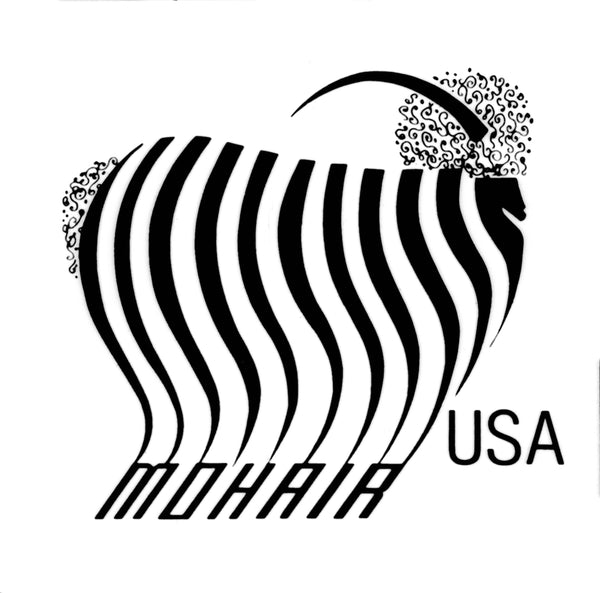About
Angora goats evolved on the Anatalian Plains of Turkey near the city we now know as Ankara and from which the name “Angora” derives. The term “mohair” apparently derives from Arabic (mukhayyar). Angora goats were highly regarded and jealously protected from exportation until the sixteenth century when the Angora goat was introduced into Spain and France. However, the goats were not introduced to the United States until 1849.
From the importation of a small flock of seven does and two bucks, the United States has developed into one of the two largest producing nations in the world with an annual production of two million pounds. The other principal mohair source is South Africa and Turkey. Texas, with a herd of 200,000 goats is the primary mohair region of the United States, producing 90% of the total US mohair. The main region is on Edwards Plateau in Southwest Texas, where the mild dry climate and hilly, brushy terrain are particularly well suited for raising Angora goats due to their dry mountain origin. Additional range and animal husbandry studies now allow Angora goats to be raised in many states of the Union.
As the environmental and quality awareness issues of the American consumer rises, the market place must meet these changing demands head on. Today’s consumer will not tolerate shoddy craftsmanship, poor quality, and unsubstantiated claims. They seek quality at reasonable price and products that will last and perform.
What started out as fashionable trends have become lifestyle choices. Health awareness, natural foods and natural fibers are some of the basic new ideals set forth in the past two decades. The distinctive properties of mohair have made it a highly desired fiber through the centuries for both clothing and home furnishings. Its soft luxurious hand and rich luster combine with great durability for a long lasting product.
With its high affinity for dyes, mohair produced colors that have an unmatched clarity and a halo-like glow. Fabrics containing lively, smooth mohair don’t have a tendency to be easily crushed or matted.
Mohair is an all-season fashion fiber, in wonderfully warm knits and wovens for cold weather, and in airy, lightweight structures that breathe with the body for warm days. Used alone or in blends, mohair imparts its unique signature to an infinite variety of fabric textures, from lofty fleeces, rich tweeds and frothy knits, to crisp men’s suiting fabrics. As a fake fur fabric, mohair creates an environmentally friendly alternative to real fur. Mohair is a naturally soft fiber which is enhanced by current expertise and modern processing techniques.
As a decorating fabric, mohair is valued for its flame-resistance, and high sound absorbency. It is ideal for public places such as symphony halls, theaters, hotel lobbies, offices as well as for homes. In addition, mohair drapes are effective insulators, keeping heat in during cold weather and serving as a barrier against outside hot temperatures in summer.
Mohair can be used in many items; accessories of hats, scarves, lounging boots and slippers; throws and blankets; carpeting and rugs; wigs; paint rollers and ink transfer pads; and children’s toys. Through the ages the appeal of mohair has continued, adapting to the times with new and exciting fabric and style interpretations.
